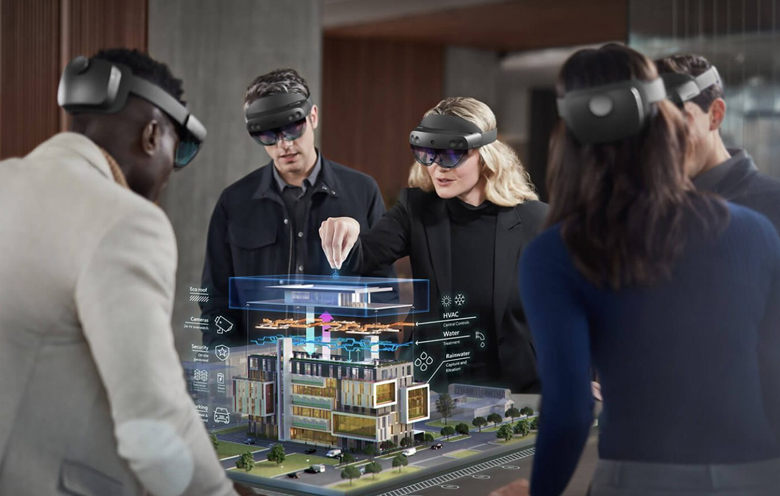As we move ahead into 2025, it’s clear that Virtual Reality (VR) is no longer just a buzzword—it’s a business tool that’s reshaping entire industries. One of the most exciting transformations is happening in the real estate sector, where VR is redefining how properties are marketed, viewed, and sold.
Gone are the days when homebuyers had to schedule multiple site visits, shuffle through brochures, or try to decipher floor plans. Today, with a VR headset or even a smartphone, buyers can explore properties around the world, all from the comfort of their couch.
This blog takes a look at how virtual reality is revolutionizing real estate sales in 2025 and why it’s becoming an essential part of the modern property-buying experience.
From Innovation to Industry Standard
What began as a novelty is now a standard feature in most high-end property listings. In 2025, real estate developers and agents are leveraging VR to offer immersive, 360-degree virtual tours that replicate the experience of physically walking through a property.
Whether it’s a luxurious villa in Goa or a high-rise apartment in Mumbai, VR allows buyers to virtually “enter” the space, walk through each room, view details up close, and even visualize different design options—all without stepping foot on the property.
Why Virtual Reality Works So Well for Real Estate
- Remote Access for Global Buyers
One of the biggest advantages of VR is that it “eliminates geographic barriers”. NRIs (Non-Resident Indians), international investors, or even local buyers with packed schedules can tour properties anytime, anywhere.
This is especially beneficial in fast-growing markets like Vapi, Silvassa, and other Tier 2 and Tier 3 cities in India, where developers are now targeting global buyers by offering VR-enabled walkthroughs.
- Better Visualization, Better Decisions
Reading a floor plan or looking at 2D images doesn’t give buyers a true sense of space or scale. VR fills that gap by providing spatial awareness —buyers can experience the actual layout, ceiling height, window views, and furniture placement.
This enhanced visualization helps buyers make quicker, more confident decisions, which shortens the sales cycle and improves conversion rates.
- Customization in Real-Time
Modern VR tools allow users to change finishes, wall colors, furniture layouts, or even switch between different unit configurations on the spot. This level of interactivity makes the experience more personal and meaningful for the buyer.
Developers can also showcase future amenities, landscaping, and even the neighborhood vibe—helping buyers feel like they’re already part of the community.
How Developers are Using VR in 2025?
In 2025, VR isn’t just for luxury real estate. Thanks to lower hardware costs and user-friendly software, even mid-segment and affordable housing developers are integrating VR into their sales strategy.
Here’s how:
- Pre-launch Campaigns: Builders use VR to showcase under-construction or yet-to-be-launched projects, helping those secure bookings early.
- Sales Galleries with VR Zones: Instead of building expensive sample flats, many developers now set up VR booths in their sales offices, where prospects can take a full tour of different unit types.
- Virtual Site Visits: In areas like Silvassa and Daman, where buyers may be based in metros like Mumbai or Delhi, developers offer remote VR tours via mobile apps or desktop browsers, reducing the need for physical travel.
VR experiences are now accessible through multiple devices:
– High-end headsets (Oculus, HTC Vive)
– Smartphones with VR viewers (Google Cardboard-style)
– Standard web browsers with interactive 3D environments
This flexibility ensures that VR is no longer limited by tech barriers.
Challenges and what’s next
While VR has made huge strides, there are still a few hurdles:
- High initial costs for content creation
- Digital literacy among older or first-time buyers
- The need for fast internet for smooth VR experiences
However, with rapid tech adoption and India’s digital infrastructure growing stronger each year, these challenges are shrinking fast.
Looking ahead, we can expect:
- Augmented Reality (AR) integration for property visits that blend virtual elements into real environments
- AI avatars as virtual sales agents who can answer queries during VR tours
- Fully immersive metaverse real estate showrooms , where buyers explore multiple projects in one virtual cityscape
Final Thoughts
As we look ahead to the rest of 2025 and beyond, one thing is clear: Virtual Reality is no longer optional in real estate—it’s essential.
For buyers, it means a smarter, more immersive and flexible way to shop for property. For developers and agents, it offers a powerful way to engage, convert, and close deals faster.
In an industry built on dreams, VR brings those dreams closer to reality—one virtual tour at a time.


